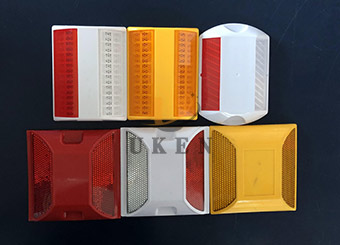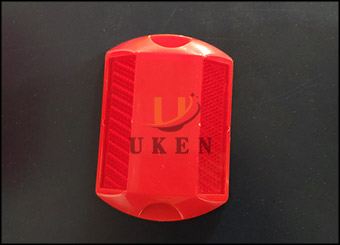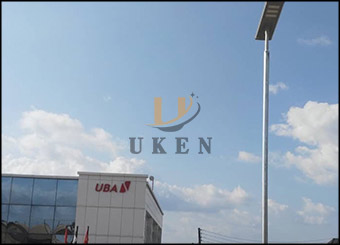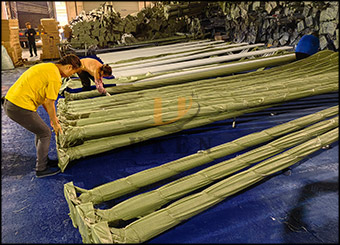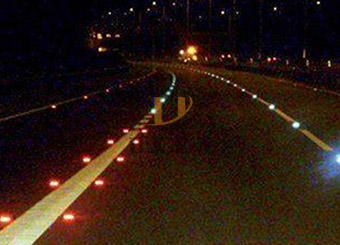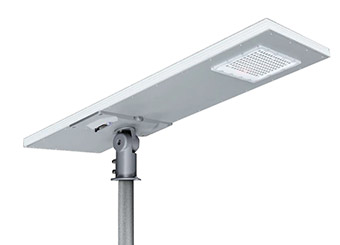At a time when the concept of energy saving and environmental protection is deeply rooted in people’s hearts, LED solar street lamps are rapidly gaining popularity around the world due to their significant advantages. The use of solar energy into electricity to achieve the lighting function, not only to save the cost of traditional electricity, but also reduce carbon emissions, contributing to environmental protection. Whether it is a busy city street, or a quiet countryside path, you can see their figure. According to market research organisations, the LED solar street light market has been growing at a rate of 85% per year in recent years. The quality and design of the pole, as a carrier supporting the street lamps, solar panels and other key components, is directly related to the overall performance, safety and aesthetics of the street light, and occupies a pivotal position in the entire street light system.
Steel: steel has high strength, good toughness, can easily withstand the weight of the lamps and lanterns and larger wind, suitable for high light poles. Like the light poles next to the open motorway, mostly made of steel. Hot-dip galvanising process for steel anti-corrosion, the steel will be immersed in molten zinc liquid, the surface of the formation of zinc-iron alloy layer, isolation of oxygen and moisture, to extend the service life of the Q235 steel price pro-people, a certain degree of strength and toughness, suitable for ordinary township roads; Q345 steel strength is higher in the coastal windy areas of the outstanding performance.
Aluminium alloy: aluminium alloy material is lightweight, corrosion-resistant, and has obvious advantages in installation and maintenance. When renovating old districts, narrow roads are inconvenient for large-scale equipment to enter, and lightweight aluminium alloy poles are easy to carry manually. The surface of aluminium alloy naturally forms a dense protective film of aluminium oxide, which prevents the internal metal from corroding. Aluminium alloy containing magnesium has better corrosion resistance and performs well in humid environments.
Stainless steel: Stainless steel has excellent corrosion resistance and has significant advantages in harsh environments such as industrial pollution zones and seashores.304 stainless steel is suitable for general environments, while 316 stainless steel performs well in high salinity coastal areas due to molybdenum addition. However, the cost of stainless steel is higher, but the long-term use of low maintenance costs, the overall cost-effective advantage.
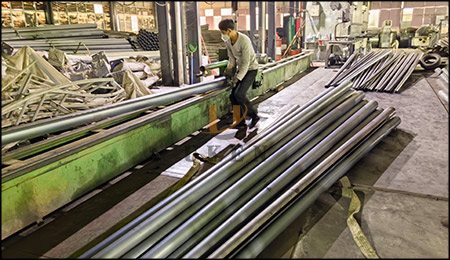
Environmental suitability
High temperature and rainy areas, air humidity, rain, should choose corrosion-resistant aluminium alloy or stainless steel poles, such as southern cities. Heavy industrial pollution areas, acidic gases, 316 stainless steel poles are the best choice to ensure normal use in harsh environments.
Budget Considerations
Steel poles have a low initial cost, but weak corrosion resistance and high maintenance and replacement costs in poor environmental areas. Aluminium alloy light poles are moderately priced and have low installation and maintenance costs. Stainless steel light poles have high initial investment and very low maintenance costs. Readers need to weigh according to the budget and life, limited budget and short life can consider steel poles; the pursuit of long-term stability and sufficient budget, stainless steel poles are better, you can make decisions through costing.
Lighting area characteristics
Different lighting areas have different needs. Main road traffic flow, traffic speed, need high brightness, wide range of lighting, pole height 8 – 12 metres. Secondary roads have small traffic volume and slow speed, so the height of the pole is 6 – 8 metres. District road service residents travelling, light pole height 4 – 6 metres. Park lighting to create an atmosphere, pole height 3 – 6 metres.
Lamp power and type
Lamp power is related to the height of the pole. Large power lamps illuminate a wide range of lights, need a higher pole, such as 100W lamps with 8 – 10 metres pole. Floodlights have a large angle of light emission, light dispersion, the pole can be appropriately lowered; spotlights are concentrated, suitable for key lighting, the pole can be lowered to focus the light.
Simple estimation formula
Height of the pole = width of the lighting area ÷ (2 × tan (luminous angle of lamps ÷ 2)). The width of the lighting area refers to the width of the road to be illuminated, and the luminous angle of the luminaire is the range of light angles. If the road is 10 metres wide, the luminous angle of the lamps and lanterns 120 °, substituting into the formula can get the height of the lamp post about 5.77 metres, the actual application can be adjusted.
Professional lighting design software
Professional software such as DIALux can accurately determine the height of the pole. By entering the height of the pole, the parameters of the luminaire and the size and shape of the illuminated area, the software simulates the lighting effect and generates an illuminance distribution diagram. From the diagram, you can judge the distribution of light intensity intuitively, adjust the parameters until you are satisfied, and determine the optimum height of the light pole.
Functional design elements
Base structure design
There are conical and cylindrical light pole base structures. Conical light poles have a large diameter at the bottom, low centre of gravity, good stability, suitable for deep burial installation and strong wind resistance. Cylindrical poles have a simple appearance and are suitable for places that require high aesthetics and are easy to install and maintain.
Cable Management Design
Good cable management design is very important. Cable channels are reserved inside the pole to prevent cable exposure, and fixing devices are set to avoid cable shaking. Light poles with access doors are easy to access and maintain, reducing time costs, such as replacing lamps or troubleshooting cable faults can be operated by opening the access door.
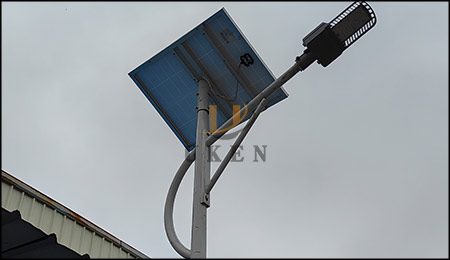
Harmonisation with the environment
The light pole design should be integrated with the surrounding environment. Historical and cultural districts choose retro style light poles, such as those with carvings and antique architectural elements, to show the historical and cultural atmosphere. Modern commercial centres choose simple and modern style light poles, such as hard lines and simple shapes, to match with high-rise buildings, such as the financial district of Lujiazui, Shanghai.
Innovative modelling
Tree-like, artistic modelling light poles can become a landscape highlight. Tourist attractions imitation tree-shaped light poles and natural echoes, the characteristics of the town to the local cultural characteristics of the design of art modelling light poles, to enhance the cultural heritage and attractiveness, enhance the overall aesthetics.
Optimisation of assembly method
There are welding and bolting assembly methods for light poles. Welded light poles have good integrity and high strength, but installation requires professional equipment and technology, and later disassembly and adjustment is difficult. Bolt connection is easy to transport and install, and the parts can be disassembled during transport, reducing space occupation and cost, simple installation, suitable for large-scale projects, such as the installation of a large number of street lights in new industrial parks.
Weight and size design
Lightweight poles are easy to transport and install, reduce labour intensity, and have obvious advantages in narrow areas. Reasonable size design reduces transport costs and installation space requirements, and the detachable design of the pole can be adapted to different installation environments to ensure smooth installation.
Maintenance Convenience Points
Easy-to-clean surface treatment
Plastic spraying and baking paint are common surface treatments. Plastic spraying surface is wear-resistant, easy to clean, dust and stains are not easy to adhere to, and can be rinsed with water or detergent. Baked enamels have a smooth, weather-resistant surface that reduces maintenance frequency and costs in heavily polluted areas.
Replaceable Parts Design
Replaceable parts can reduce maintenance costs and prolong service life. Lampshade, lamps and lanterns fixed parts and other fragile parts, replaceable design to facilitate timely replacement, to ensure stable installation of lamps and lanterns and normal lighting, reduce maintenance costs.
Cost Composition Analysis
Material cost
The material cost of steel light pole is low, affected by market supply and demand and iron ore price. Aluminium alloy due to the production process and raw material characteristics, the price is higher than steel, the proportion of alloying elements affect the price. Stainless steel poles have the highest material cost, complicated production process and high price of chromium and nickel as raw materials. Material cost ratio: steel about 30% – 40%, aluminium alloy about 40% – 50%, stainless steel about 50% – 60%.
Processing and installation costs
Forging process makes the lamp post high strength, but equipment and technology requirements, high cost. The casting process is simple and low cost, but the quality may be slightly inferior. Installation costs are related to the height, weight and difficulty of the pole. Tall poles require specialised equipment, which increases costs. Processing and installation costs account for 30% – 50%.
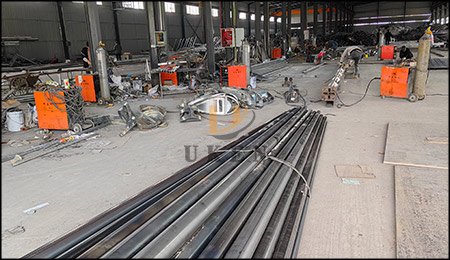
Initial Investment Strategy
Large-scale municipal projects require high performance, aesthetics, and longevity of street lights, and initially can increase the material and design budget, select high-quality materials and innovative design to enhance the city’s image and reduce the cost of the later stage. Small community projects focus on cost-effective, choose low-cost steel poles and simple styles to control costs.
Long-term maintenance budget
The maintenance cost of different material light poles is different. Steel poles require regular anti-corrosion treatment in poor environmental areas, while aluminium and stainless steel poles require regular cleaning and inspection. Maintenance budget can account for 10% – 20% of the total budget, project planning to set aside funds to ensure the long-term stable operation of street lights.
Brand influence assessment
Market reputation research
Learn about brand reputation through online evaluation platforms and engineering construction forums. Focus on product quality, installation convenience, after-sales service evaluation. If a brand is praised by users for its reliable quality, convenient installation and timely after-sales response, it is trustworthy; on the contrary, brands with much negative feedback should be chosen with caution.
Industry Qualifications
ISO quality management system certification and CE certification is an important qualification, ISO certification shows that the brand follows strict quality management standards, CE certification to ensure product safety and environmental protection. When choosing, check whether the brand has the qualification to ensure product quality.
Product Quality Inspection
The production of light poles is subject to strict testing, including raw material testing, strength and corrosion resistance testing of the finished product. Strict testing ensures product quality, and choosing a brand with multiple testing procedures reduces quality risks.
After-sales service commitment
Brand after-sales service is very important. Warranty period is commonly 2 – 5 years, after-sales maintenance response time commitment within 24 hours, to ensure the supply of spare parts. Good after-sales service to solve the use of problems, to ensure the long-term stable operation of street lamps, compared with different brands of after-sales service content selection of quality brands.
Selection of LED solar street light poles need to consider the material, height, design, installation and maintenance, budget and brand and other factors. Material selection according to the environment and budget, height to match the lighting needs, design and aesthetics function, installation and maintenance of convenient to protect the long-term benefits, reasonable planning budget, choose a reliable brand, the factors are interrelated and need to be weighed comprehensively.
